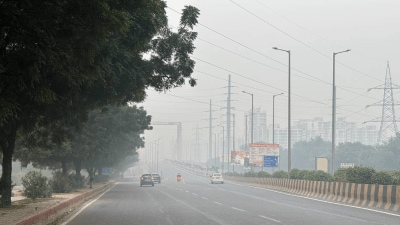Still not enough roads, bridges or money
The mid-year review presented by the Finance Minister to the Parliament on Monday is, generally, a realistic and truthful analysis of the In...

The mid-year review presented by the Finance Minister to the Parliament on Monday is, generally, a realistic and truthful analysis of the Indian economy and recommendation of policy priorities. Not that the truth was absent from public discourse before — P Chidambaram has himself said many of these things in his earlier incarnations. Repetition of truth has value, lest it be lost or masked in the labyrinth of coalition politics.
The question is, though, when will this kind of discussion become action? While the measures outlined and the signals contained are positive, one has a certain sense of deja vu in terms of the recommendations.
In many ways, the mid-term review is encouraging for India. It suggests that we are macro-economically sound and that the economy remains dynamic. The high Centre and State deficits are offset by continued growth driven by expansion of services and industry. The relatively uneven monsoon season reduced expected agricultural growth, but this has neither depleted the foodstock nor acted as too much of a damper on the economy. The growth rate, at over six per cent, is still among the highest in the world. On the external front, exports are up by 24.4 per cent and the flow of foreign direct investment (FDI) continues to increase. Inflows in the first half of this fiscal year were more than double the corresponding period last year.
So what are the clouds on the horizon? And what do we know — as evident in this mid-year review and other public discourse? While there are many subjects to comment on — both praise and critique — two stand out where rhetoric requires accompanying action.
First, our infrastructure remains weak. An Annexure describes the progress of select reform measures announced in the Budget 2004-05, but does not discuss the quality of compliance — which is as important as compliance itself. In several areas like liberalising institutional investment in specific sectors, raising FDI limits in Telecom and Insurance, consensus building has yet to yield outcomes. There is more than a hint that the retail sector will also be opened to FDI — an area truly in the realm of ‘political economy’ since this will need wider public discourse.
The area of public-private partnership and investment in infrastructure contains challenges and opportunities. We continue to skirt around the fact that reforming the consumer-provider interface would be the biggest contributor to attracting investment in infrastructure and facilitating public-private partnerships. There is demand for reliable electricity, better roads, faster internet connectivity, wider-spread mobile service, timely and convenient shipping, and civil aviation. We should give people and industry the chance to purchase such services rather than continuing to provide poor infrastructure for free. Subsidise (or worse cross-subsidise) where really needed to provide basic services, but make these transparent and preferably through direct payments to the intended beneficiaries rather than mixed in with accounts of the infrastructure provider.
Second, the fiscal slippage is a dark cloud on the horizon. We beat the target for our fiscal deficit, coming in at 39 per cent of the budget estimate rather than the targeted 45 per cent, but this is a hollow victory. The decrease in deficits was driven in part by pre-payment of State loans — a one-off event that does not imply that the year-end deficit figures will achieve the same feat. Our revenue deficit, on the other hand, came in at 79 per cent of the budget estimate — a big gap from the targeted 45 per cent. Excise, customs, and corporate income taxes have been below the levels that we would have expected given the kind of favorable macro-economic conditions and expectations in the review.
We cannot allow this cloud to become fog. We need to improve tax administration and compliance — the mismatch between the strong economy and anemic revenues needs redressal. While moving to a VAT regime from April 1, 2005 (we hope there is no slippage this time) is positive, nonetheless, improving the more fundamental aspects of administration and compliance are crucial.
More important than tightening the revenue net, sustainable fiscal correction necessitates fundamental changes in public expenditure. While additional revenue collections are necessary, there are limits to taxation in today’s globally integrated economy.
Public expenditure cannot continue to multiply without some effort to evaluate its returns. While there is every evidence of new expenditure claims such as an almost open-ended commitment on Employment Guarantee Assurance Scheme, clever financial engineering for additional investment on infrastructure, and inevitably some newer commitments to be made by Chidambaram in next year’s budget, there is little evidence of expenditure reprioritisation. While discussions on terminating schemes and commitments that have outlived their utility have continued for some years and have even led to some sensible mergers of ongoing schemes, actual savings have been rather minimal. Our efforts to evaluate the quality of public expenditure remains weak.
Chidambaram himself had presented a White Paper in 1997 on subsidies, another report prepared by the National Institute for Public Finance and Policy (NIPFP) on targeting subsidies is being considered in draft form, and other reports are on their way. As far as emphasising the need for rationalisation, what can these reports say that has not been said before? The essential problems are known — rationalising and/ or targetting user charges, fertiliser subsidies, public distribution system, and kerosene regimes, as well as removing hidden distortionary cross-subsidies in infrastructure and other areas.
Improving targeting and reworking cross-subsidies, however, is politically difficult. Verifying income and assets is notoriously difficult in India. Given this difficulty, one immediate step would be that subsidies should be administered which makes beneficiaries self-selecting. This means designing the services so that they meet the basic needs of the target beneficiaries who could not afford economic costs, but are not as attractive when compared to the option for paying commercial prices in the marketplace.
On the whole, the mid-year review says all the sensible things that are needed to move India to the growth trajectory of 7-8 per cent. It also lays down a broad framework for the Budget to be presented in February. Sustained economic reforms are about the three C’s of continuity, coherence, and congruence. The Prime Minister and his reform team represent continuity; coherence and congruence will, however, be represented by tangible outcomes on many truths reiterated in the review.
Write to nksingh@expressindia.com



- 01
- 02
- 03
- 04
- 05




























